Even if I doesn't take such precaution, chips behave as expected. Is
that normal?
Yes, ESD is an unpredictable event, and you can't see it (most of the time, sometimes you can see damage on IC's). Sometimes it only damages a trace partially and it could take months or years for a chip to fail, sometimes the effect is immediate and the circuit ceases to function. The only way to know exactly what damage occurred is to take the IC apart and etch the packaging away and look at the damage to the silicon with nice expensive microscope. This takes a lot of time and most engineers don't have access to etching tools and high resolution microscopes so we try to avoid ESD at all costs.

Source: All about circuits
What come in mind is that maybe a particular part of a chip can get
damage instead of another. (particularly on µC) Is that true?
Yes, there are certain areas of an IC that are more prone to failure. Many modern IC's come with some kind of ESD protection on the inputs, like diodes. A failure is a failure and there is no way to tell exactly when where or how a device will fail after ESD damage.
What can I do to reduce these effects? I have no grounding bracelet
but I can use a clamp (a small one usually use for hairs).
If its an expensive device then I'd buy the protection equipment. If you already have multiple devices and they are low cost, its probably not the worst thing if it fails. The biggest problem with ESD is having intermittent problems where the device is not functioning in normal operation and time is wasted in figuring out why and replacing the part.
I would do your best to be ESD safe. As a hobbyist this can be difficult.
Here are some ESD tips:
- Surfaces should be conductive and connected to ground, if you have a
metal surface, this could stand in place for a mat but you couldn't
turn the device 'on' while it was resting on top of the conductive
surface.
- The pink bags are bad because the conductive coating wears off, the
mylar (aluminum coated bags) are good and conductive.
- Some materials like clothing, paper and plastics can develop charges
that generate fields in the thousands of volts range and blow out
transistors on sensitive devices so keep non-esd safe materials away
from sensitive electronics.
If you don't use a grounding wrist strap, then you run the risk of shocking the part when you use tweezers or an ESD gun to build or service it. Do your best to minimize charge building up on materials by equalizing potentials.
ESD prevention tries to equalize all potentials so charge cannot build up on a surface and create an electric field.

